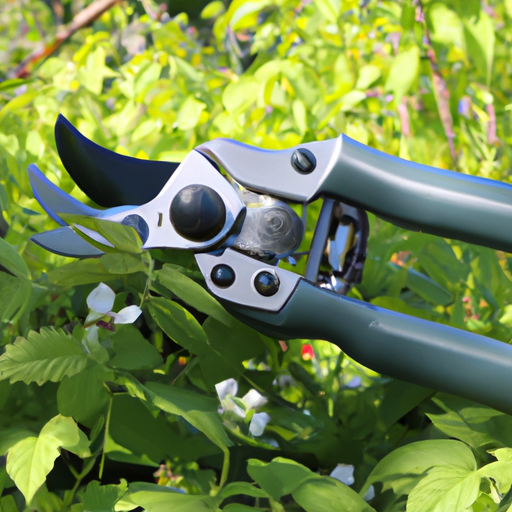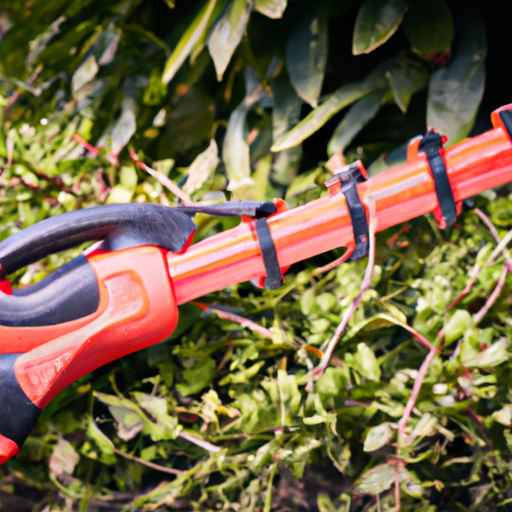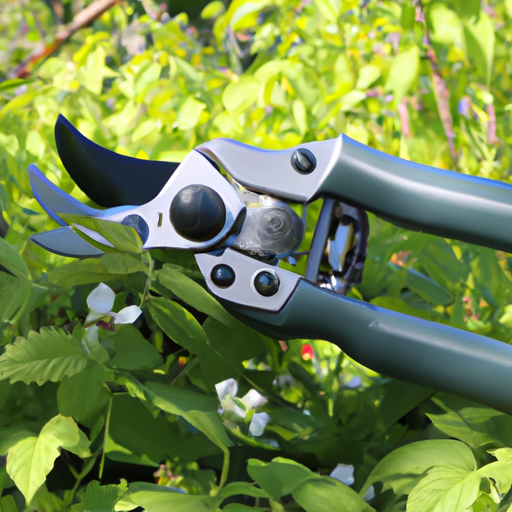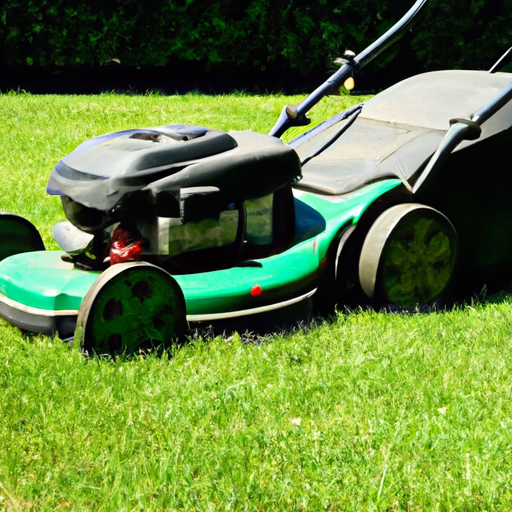Hey there! Have you ever used a battery-powered trimmer for your yard work? We’ve got some great tips to help you stay safe while using these handy tools. Let’s dive in and learn more!
First and foremost, always make sure to read the instruction manual that comes with your trimmer. It may seem like a hassle, but it’s really important to familiarize yourself with the tool’s features and safety guidelines. Each trimmer can have its own unique set of instructions, so taking the time to read and understand them can prevent accidents.
When using a battery-powered trimmer, it’s crucial to wear the right safety gear. This includes goggles or safety glasses to protect your eyes from flying debris, as well as sturdy gloves to protect your hands. Remember, accidents can happen at any time, so it’s better to be safe than sorry.
Another important tip is to never operate the trimmer in wet or damp conditions. Water and electricity just don’t mix, so using the trimmer in wet conditions can be extremely dangerous. And remember, always make sure the trimmer is powered off and the battery is removed before cleaning or servicing the tool.
These are just a few essential safety tips to keep in mind when using a battery-powered trimmer. In our article, we’ll cover even more tips to ensure you have a safe and enjoyable yard work experience. Stay tuned to learn more!
Understanding Battery-Powered Trimmers
Battery-powered trimmers are a popular choice for homeowners and professionals alike. These trimmers are designed to effectively cut grass, weeds, and other vegetation without the need for a cord or gasoline. They are powered by rechargeable batteries, which are lightweight and easy to handle.
How do Battery-Powered Trimmers work?
Battery-powered trimmers work by harnessing the power of electricity stored in the battery to drive the trimmer’s motor. When the user presses the trigger, the battery delivers power to the motor, which in turn rotates the cutting head. This rotating motion allows the trimmer to trim and cut through vegetation with ease.

Advantages of Battery-Powered Trimmers
There are several advantages to using battery-powered trimmers:
-
Portability: Battery-powered trimmers are cordless, which means you can take them anywhere without being restricted by the length of a cord. This makes them ideal for trimming large yards or hard-to-reach areas.
-
Noise Levels: Battery-powered trimmers are generally quieter compared to their gas-powered counterparts. This is a significant advantage, especially if you live in a residential area where noise restrictions may apply.
-
Ease of Use: Battery-powered trimmers are lightweight and easy to maneuver, making them suitable for users of all ages and physical abilities. They are also relatively maintenance-free, requiring less upkeep compared to gas-powered trimmers.
Choosing the Right Battery-Powered Trimmer
When selecting a battery-powered trimmer, there are a few factors to consider to ensure you choose the right one for your needs:
-
Consider the type of trimming required: Determine the type of vegetation you will be trimming. If you have thick or tough grass, opt for a trimmer with a more powerful motor and a wider cutting swath.
-
Evaluate battery power and runtime: Check the battery capacity and consider how long it will last on a single charge. Look for trimmers with longer battery life if you have a large yard or extensive trimming needs.
-
Check for adjustable cutting lengths: Ensure that the trimmer allows you to adjust the cutting length to suit your desired grass height. This flexibility will give you more control over the finished result.
-
Look for additional features and accessories: Some battery-powered trimmers come with added features like rotating heads, edging capabilities, or attachments for other functions. Consider your specific trimming needs and choose a trimmer that offers the necessary features.

Precautions before Using a Battery-Powered Trimmer
Before using a battery-powered trimmer, it is important to take certain precautions to ensure your safety and the proper functioning of the equipment:
-
Read and understand the user manual: Familiarize yourself with the operating instructions provided by the manufacturer. This will help you understand how to properly use and maintain the trimmer.
-
Inspect the trimmer for any damage: Before each use, inspect the trimmer for any signs of damage, such as frayed cords or loose parts. Do not use a trimmer that appears to be damaged, as it may pose a safety risk.
-
Charge the battery fully: Always ensure that the battery is fully charged before using the trimmer. This will maximize the trimmer’s runtime and prevent unnecessary interruptions during trimming.
-
Ensure proper protective gear: Wear appropriate protective gear, including safety glasses, gloves, long pants, and closed-toe shoes. This will protect you from any debris that may be thrown while trimming.
Safety Measures During Trimming
While operating a battery-powered trimmer, it is essential to follow safety measures to prevent accidents and injuries:
-
Maintain a stable stance and balance: Stand with your feet shoulder-width apart and maintain a balanced stance while operating the trimmer. This will help you stay in control and prevent falls or accidents.
-
Keep the trimmer away from the body: Ensure that the cutting head is away from your body while trimming. Avoid placing your hands or feet near the cutting area to reduce the risk of injury.
-
Be cautious around obstacles and power lines: Pay attention to your surroundings and avoid trimming near obstacles, such as rocks, fences, or power lines. Contact with these objects can damage the trimmer or pose a safety hazard.
-
Avoid cutting wet or damp vegetation: Wet or damp grass can make trimming more difficult and increase the risk of slipping or injuries. Wait for the grass to dry before using the trimmer for optimal performance and safety.
Proper Handling and Maintenance
To ensure the longevity and efficiency of your battery-powered trimmer, it is important to handle and maintain it properly:
-
Store the trimmer in a safe place: After each use, store the trimmer in a dry and secure location, away from children or pets. This will protect the trimmer from damage and prevent accidents.
-
Clean the trimmer after use: Remove any grass or debris stuck on the trimmer after each use. Use a brush or compressed air to clean the cutting head and the blade guard to prevent clogging and maintain optimal cutting performance.
-
Check and replace the cutting line regularly: Inspect the cutting line and replace it when it becomes worn or damaged. A dull or broken cutting line can reduce cutting efficiency and strain the trimmer’s motor.
-
Service and maintain the battery: Follow the manufacturer’s guidelines for maintaining and servicing the battery. This may include periodic cleaning, checking for corrosion, and proper storage to prolong its lifespan.
Dealing with Emergency Situations
While rare, it is important to know how to handle emergency situations that may arise when using a battery-powered trimmer:
-
In case of accidental injury: If you or someone else sustains an injury while using the trimmer, seek immediate medical attention. Stop using the trimmer and assess the severity of the injury before determining the appropriate course of action.
-
Dealing with fires or battery malfunctions: If the battery or trimmer catches fire or malfunctions, distance yourself from the equipment and call emergency services. Do not attempt to extinguish the fire yourself unless you are trained to do so.
-
Proper disposal of old batteries: When the battery reaches the end of its lifespan, follow the manufacturer’s instructions for proper disposal. Many retailers and recycling centers accept old batteries for safe disposal.
Troubleshooting Common Issues
If you encounter any issues with your battery-powered trimmer, here are some common troubleshooting tips:
-
Battery not holding charge: Ensure that the battery is fully charged and properly inserted into the trimmer. If the problem persists, check the battery contacts for dirt or corrosion and clean them if necessary. If the battery continues to not hold a charge, it may need to be replaced.
-
Trimming line getting tangled: If the trimming line gets tangled or jammed, turn off the trimmer and unplug it from the power source. Remove the trimming line spool and carefully untangle the line. Rewind it properly onto the spool before reattaching it to the trimmer.
-
Motor not starting or running smoothly: Check that the battery is fully charged and properly inserted. If the issue persists, inspect the motor for any debris or obstructions. Clean the motor and make sure the cutting head rotates freely. If the problem continues, consult the user manual or contact the manufacturer’s customer support.
Additional Tips for Efficient Trimming
To ensure efficient trimming and achieve the desired results, consider the following tips:
-
Plan your trimming route: Before you start trimming, plan your path to avoid unnecessary backtracking. This will save time and ensure a more even and consistent cut.
-
Use the appropriate cutting technique: Hold the trimmer at a slight angle and move it in a sweeping motion. Avoid mowing in a straight line to prevent scalping the lawn or damaging the cutting line.
-
Maintain a consistent cutting height: Adjust the cutting height according to your preferences and maintain consistency throughout the trimming process. This will give your lawn a uniform and well-groomed appearance.
Benefits of Using Battery-Powered Trimmers
Using battery-powered trimmers offers several benefits that make them a popular choice among homeowners and professionals:
-
Environmentally friendly: Battery-powered trimmers produce zero emissions, making them an environmentally friendly alternative to gas-powered trimmers. They help reduce air and noise pollution, contributing to a cleaner and quieter environment.
-
Lower noise levels: Battery-powered trimmers operate at a significantly lower noise level compared to gas-powered trimmers. This makes them more suitable for use in residential areas, where noise restrictions may be in place.
-
Portability and ease of use: Battery-powered trimmers are lightweight and easy to maneuver, making them user-friendly for people of all ages and physical abilities. The absence of a cord allows for greater freedom of movement and the ability to reach tight or difficult areas.
Conclusion
Battery-powered trimmers provide a convenient and efficient way to maintain your yard. By following the safety tips discussed in this article and choosing the right trimmer for your needs, you can ensure safe and effective trimming. Remember to handle and maintain your trimmer properly, and always prioritize your safety and the safety of those around you. With proper precautions and maintenance, battery-powered trimmers can help you achieve a well-groomed lawn without the hassle and noise associated with traditional gas-powered trimmers.

